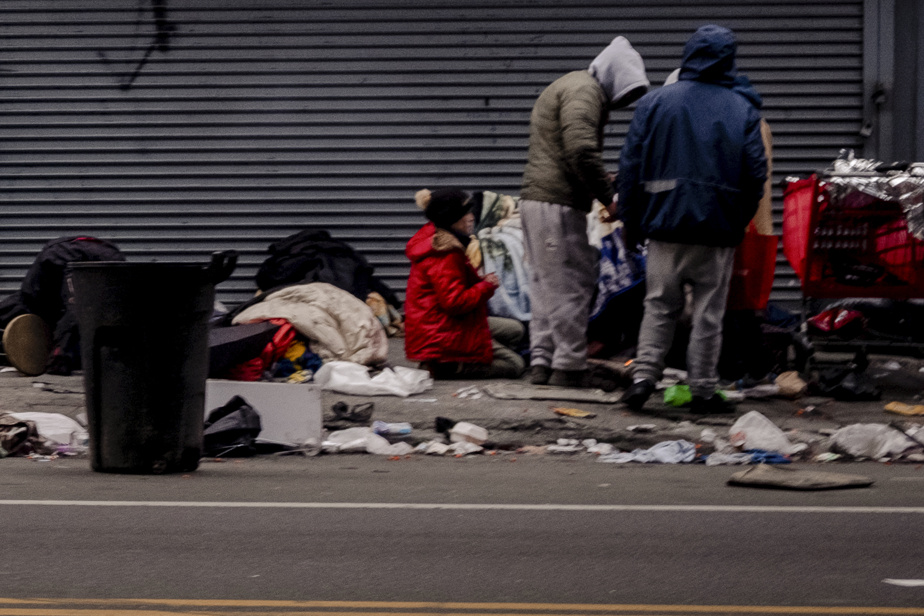A show: accelerating since the pandemic

PHOTO HUGO-SÉBASTIEN AUBERT, LA PRESSE ARCHIVES
The general director of CACTUS Montreal, Jean-François Mary
Overdoses: the other epidemic is the title of an episode of Discoveries, the science show from ICI Télé, where we see that the opioid crisis has greatly accelerated “in the blind spot of the pandemic” of COVID-19. We give the floor in particular to Jean-François Mary, general director of CACTUS Montréal, supervised injection center. “Before the pandemic, we generally had one overdose per week or two weeks. But since July (2020), we have had periods with more than one overdose per day,” said the latter. Several doctors and scientists interviewed detail the devastating impact of the pandemic on the proliferation of synthetic drugs. The reporting team also went to British Columbia where the devastation is immense and where attempts are being made to counter the consumption of fentanyl with pharmaceutical heroin. An initiative which encountered several obstacles. “I tried to offer Quebec, Canadian and American suggestions,” says Mr. Fallu of the suggested links. In the case of Discoveries, we go to meet people working in the field. »
Watch the episode of Discoveries on opioids
On the web: International Awareness Day

PHOTO DARRYL DYCK, CANADIAN PRESS ARCHIVES
Portraits of overdose victims, on the occasion of International Overdose Awareness Day, August 31
The English-language site for International Overdose Awareness Day offers a version in several languages, including French, of this annual event held on August 31. “This international day is celebrated worldwide, to different degrees,” said Mr. Fallu. This includes several Canadian and Quebec cities. But it doesn’t always get the attention it needs. » The site is varied, with an invitation to get involved, information on overdoses and the means of prevention available. We will also find testimonies which are moving to read. Note that the color adopted is purple (some media write purple or mauve) and that every year, buildings and large structures are lit in this color in memory of the victims. Last year, the tower of the Olympic Stadium, the Ferris Wheel of Old Montreal, the Samuel De Champlain Bridge and the Gamelin Gardens were adorned with it.
Visit the International Overdose Awareness Day website
A podcast series: disturbing and catchy radio truth

PHOTO CHARLES WILLIAM PELLETIER, SPECIAL COLLABORATION
Naloxone kit, whose contents can save an opioid overdose victim
Mr. Fallu speaks with great interest about the podcast series Crackdown hosted and produced by Garth Mullins which can easily be found on the web. Defining himself as an activist for many years, Garth Mullins was also an opioid user. “When it comes to issues related to opioids, British Columbia is much more at the forefront,” says Mr. Fallu. Crackdown is really interesting because it is funded by a university research center with a view to transferring knowledge. This is an online radio show that addresses many topics related to drugs and the crisis, from many angles. It involves ex-addicts, people using services, activists, scientists, etc. » Most recent episode (no 44) broadcast at the time of writing this text was dedicated to Danny, a queer person in his twenties who moved across the country, feeling abandoned by everyone and who turned to prostitution to buy his drugs . Radio truth that is both disturbing and catchy.
Listen to the podcast show Crackdown (in English)
Online media: shocking content

PHOTO PATRICK SANFAÇON, LA PRESSE ARCHIVES
The many physical tolls that synthetic drugs wreak are exposed in Manisha Krishnan’s report on Vice News.
Warning, shocking content! Vice News does not use metaphors. The numerous physical ravages that synthetic drugs wreak are exposed without censorship from the first moments of this forty-minute report by Manisha Krishnan and first broadcast two years ago. “She is THE drug reporter for Vice News,” says Jean-Sébastien Fallu. In her report, she talks more about the evolution of the crisis and what awaits us. And Vice prides itself on providing nuanced, highly informed coverage of its topics. » Mme Krishnan devotes part of his story to Keisha, a seller of fentanyl on the streets of Vancouver. The latter denies cutting the substance with other synthetic products, including benzodiazepines. We then leave the sordid alleys of the British Columbian metropolis for a cozy hall in Washington where the journalist cooks, no pun intended, a former national director of the fight against drugs. The latter is pleased to have seen China stop the export of fentanyl under American pressure, but does not feel responsible for the devastation attributable to replacement products.
Watch the Vice News report (in English)
Who is Jean-Sébastien Fallu?

PHOTO ROBERT SKINNER, LA PRESSE ARCHIVES
Professor of the School of Psychoeducation at the University of Montreal Jean-Sébastien Fallu
Jean-Sébastien Fallu is an associate professor at the School of Psychoeducation (faculty of arts and sciences) at the University of Montreal.
He holds a doctorate in psychology from the University of Montreal and a postdoctoral fellowship in social and epidemiological research from the Mental Health Addiction Center affiliated with the University of Toronto.
He is also a researcher for various organizations, including the University Institute on Addictions, and co-author of the book Cannabis published by Presses de l’Université de Montréal (PUM).
